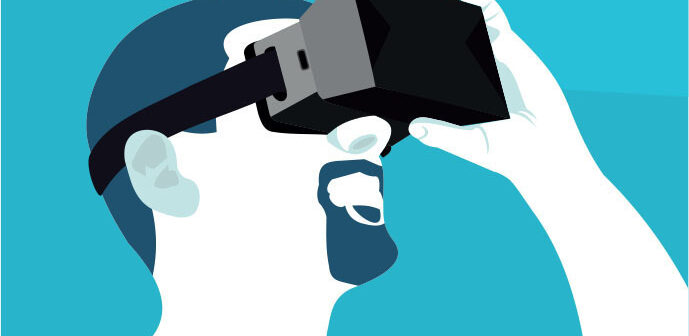“It was the best of times, it was the worst of times, it was the age of wisdom…” We have all felt like this when dealing with patients suffering from pain…so many choices and so few options. The world that Charles Dickens described in A Tale of Two Cities closely parallels the workers’ compensation world in which we care for patients suffering from pain. We try to do what is best for our patient but are confined to options that feel like the lesser of two evils: Drug A vs Drug B or Procedure A vs Procedure B. Our historical focus has been on which drug or procedure we should choose or not choose and is entirely focused on treating pain as a disease and not treating the patient as a person.
The Bio-Psycho-Social Model of Healthcare was described by George Engel, MD, and acknowledged the interplay between the biologic, psychologic and social aspects of a person and illness. Historically we treated pain as a purely biologic function, fixating on the pathologic root to treat with drugs (Rx) or procedures (injections or surgery). Approaching patients through the lens of the bio-psycho-social model allows us to shift from treating pain to treating patients. The underlying psychologic and social issues which are unique to a patient are as unique as the method by which they adapt or maladapt to pain. No person is better positioned to understand the underlying social and psychologic conditions than a nurse case manager who takes the time to process and comprehend the patient and their unique illness and condition.
In the world of business, managers lead a team of individuals with a common goal. In the world of case managers, you have the daunting task of managing complex relationships with physicians and even more complex relationships with patients (some of whom may not want to get better or recover). As you reach into your proverbial bag of tricks, there are a lot of emerging technologies to assist you in performing your job. We are living in an exciting time of massive innovation in healthcare. It’s up to us to take advantage of that innovation. We have all heard about telehealth, digital health and virtual care. These are terms for new approaches and solutions to old problems. To name a few of these innovative industry “disruptors,” consider companies like Virtual Sleep Labs, in Florida, which has found a way for high-quality, low-cost sleep studies to be performed in patients’ homes, or DermTech, which has created a diagnostic tool to detect melanoma without a biopsy or scalpel using a sticker. We have all seen the commercials for Cologuard, which has transformed colorectal cancer screening with their in-home genetic testing for cancer. Another such company is Harvard MedTech, which has created a workers’ compensation-focused program specifically for patients suffering from the physical and emotional trauma that is caused by workplace injuries, called Vx Therapy. To optimally utilize these new approaches, we as clinicians also have to have a new approach in how we think about our patients and their needs. We need to expand our thinking.
A famous example of an industry that lost its way is railroads. They kept their blinders on and refused to embrace new tools like cars and planes. They thought that they were in the “railroad” business and the new stuff was just a distraction. They painfully found out that they were wrong; they were actually in the transportation business and soon become somewhat irrelevant. Likewise, many in healthcare act as if we are in the pill and surgery business. We are not; we are in the healing business. We need to think “outside of the box” and be open to novel ways of thinking about our patients and how to help them. We are not in the pills and surgery business; we are in the healing business.
To illustrate my point of a new way of approaching an old problem, pain, let’s take a closer look at Vx Therapy. It is a textbook example of innovation and a novel therapeutic approach. It combines proprietary virtual reality technology with personalized behavioral health interventions as a resource for treating workers’ compensation patients suffering from pain. The term Vx comes from two widely accepted forms of therapy: Virtual Reality (VR) and Behavioral Therapy (BTx) to create the eponym “Vx.” Vx Therapy focuses on the bio-psycho-social aspects of the patient’s condition and offers a non-pharmacologic and non-surgical tool to not only treat acute and chronic pain but also create more pain-resilient patients. By engaging patients with the virtual reality headset and having telephonic consultations with specially trained personal clinicians, Vx Therapy is achieving pain reduction equal to opioids, without the side effects, and is also driving a tremendous increase in the duration and quality of sleep reported by patients. Furthermore, patients are reporting a decrease in their symptoms of depression and anxiety and are engaging in more of their normal social, physical and behavioral activities of daily living. A recent cohort analysis demonstrated a 69% reduction or cessation in opioid use because of the Vx Therapy.
Vx Therapy leverages the concept behind the Gate Control Theory of Pain. This theory states that pain and other “noxious” stimuli can be suppressed or minimized when other preferential stimuli are present and are given priority access to the brain. Essentially, given the right stimuli, the brain will de-prioritize pain signals, and thus begins the healing process for patients. Using a series of Vx experiences, the headset begins to educate patients about their pain, teach awareness and mindfulness as well as create specific distractions and events designed to create neuroplastic change within the brain. This neuroplastic change is what leads to long-term pain mitigation and enhanced pain resiliency.
The role of a case manager is difficult. Oftentimes it can be frustrating to watch treating providers sub-optimally manage a patient’s care journey. The vast majority of workers’ compensation patients will proceed from injury to recovery in a reasonable and expected manner; however, 15-20% do not improve. As you approach patients who are not progressing, the question to answer is “why.” The goal of the case manager is to identify these patients early and then proactively work to get the patient back on track. Patients suffering from the trauma of a workplace injury deal with a constellation of symptoms: pain, sleep disturbances, anxiety, PTSD and/or depression. As you approach your patients dealing with these issues, remember that you have effective tools to positively influence the trajectory of a patient’s clinical progress and recovery. In most instances, it is possible to treat these patients without narcotics and procedures. Below is a list of some simple indicators to help you identify these patients:
OPIOIDS
- We can all acknowledge that opioids are a problem of epidemic proportions, so when you see patients seeking early medication refills, those on high morphine milligram equivalents (MMEs), or those who need to be tapered down on their opioid consumption for any reason, consider your non-pharmacologic options.
UNDERLYING PSYCHO-SOCIAL ISSUES
- Patients with underlying issues such as depression, anxiety, PTSD or socioeconomic factors have significant barriers that need to be addressed for the patient to progress in healing and returning to work.
PATIENTS DEALING WITH TRAUMA
- Whether it is physical trauma associated with an onsite injury (e.g., a fall) or emotional trauma (e.g., COVID exposure at work), patients dealing with traumas need additional psycho-social support.
PRIOR TO INTERVENTIONAL PAIN REFERRALS
- The need for interventional pain referrals is often the result of the primary care team having limited resources and/or capabilities to deal with a specific patient’s pain. They often cannot attribute the patient’s reported pain to an identifiable underlying biological issue. It also materially increases the cost of the claim and has not been shown to enhance a patient’s capacity to return to work. Furthermore, it can lead to unnecessary testing and procedures.
IN CONJUNCTION WITH SPECIFIC SURGERIES
- Patients who are scheduled to receive surgery on their shoulder, spine, foot or ankle have been linked to a higher risk of post-surgical opioid addiction and a lower ability to return to work.
PATIENTS LOOKING FOR A NON-PHARMACOLOGIC ALTERNATIVE
- Many patients are seeking non-pharmacologic alternatives in their care plans and will simply ask you for other options.
POTENTIALLY VOLATILE CLAIMS
- When cases remain open for long periods or their cost begins to spiral upward, underlying psycho-social issues are often to blame. These are the cases in which the adjusters look to you, as the case manager, to help address and mitigate these issues.
A FOOTNOTE LOOKING TO THE FUTURE…Economist William Gibson penned the line that “The Future is already here – it’s just not very evenly distributed.” Caring for patients is a timeless calling, and having the technology to make our jobs easier and even more rewarding is within reach. The emergence of technologies that allow us to engage patients outside the four walls of a health center creates an opportunity to expand the reach and breadth of our care. So I would challenge you to find the technology that makes it easier for you to care for your patients and lean into it. The future really is here, and now is the time for you to claim your portion of it.





